



















Yohji Yamamoto is a Japanese luxury fashion house headquartered in Tokyo and founded in 1972 by Japanese designer Yohji Yamamoto.Despite his skills as a master craftsman, he started his career as an anonymous creator around 1970. Two years later he marketed his own designs under the label Y's. Clothing under this label is now considered to be Yamamoto's lower-priced, or "bridge," line.






Since the establishment of Y's Company Ltd. in 1972, Yohji Yamamoto continues to spread his revolutionary, ever-widening sphere of influence in fashion, driven by his rebellious spirit.








Ever since the first presentation of his brand YOHJI YAMAMOTO in 1981 during Paris fashion week, each collection is greeted by the world with great uproar and applause. The designer entered into collaboration with adidas as Creative Director of Y-3 in 2002. He has also designed costumes in various fields, including films of directors Wim Wenders and Takeshi Kitano, opera by Wagner, and the performed by Tanztheater Wuppertal and choreographed by Pina Bausch.


The house produces both haute couture-inspired artisanal collections and ready-to-wear collections, with the former influencing the designs of the latter. Product lines include womenswear, menswear, fine jewelry, footwear, objects, fragrance, and home goods, among others. Known for deconstructive and avant-garde designs with unconventional materials.











Yohji Yamamoto born October 3rd 1943 is a Japanese fashion designer based in Tokyo and Paris. Considered a master tailor alongside those such as Madeleine Vionnet, he is known for his avant-garde tailoring featuring Japanese design aesthetics.
Yamamoto has won notable awards for his contributions to fashion, including the Chevalier of Ordre des Arts et des Lettres Medal of Honor with Purple Ribbon , the Ordre national du Mérite, the Royal Designer for Industry and the Master of Design award by Fashion Group International.
Born in Tokyo, Yamamoto graduated from Keio University with a degree in law in 1966. He gave up a prospective legal career to assist his mother in her dressmaking business, from where he learned his tailoring skills. He further studied fashion design at Bunka Fashion College, getting a degree in 1969. Yamamoto debuted in Paris in 1981.
In an interview with The New York Times in 1983, Yamamoto said of his designs, "I think that my men's clothes look as good on women as my women's clothing. When I started designing, I wanted to make men's clothes for women." More recently he has expounded: "When I started making clothes for my line Y’s in 1977, all I wanted was for women to wear men’s clothes. I jumped on the idea of designing coats for women. It meant something to me – the idea of a coat guarding and hiding a woman’s body. I wanted to protect the woman’s body from something – maybe from men’s eyes or a cold wind." His commercially successful main line, Yohji Yamamoto (women/ men) and Y's, are especially popular in Tokyo.
These two lines are also available at his flagship stores in Paris and Antwerp, and at high-end department stores worldwide. Other principal lines include Pour Homme, Costume d'Homme, and the diffusion line Coming Soon. Yohji Yamamoto Inc. reported in 2007 that the sales of Yamamoto's two main lines average above $100 million annually.
In 2008, the Yohji Yamamoto Fund for Peace was established to foster development of China's fashion industry and to help heal the long-standing enmity between China and Japan. Each year, an emerging Chinese designer will be awarded with a two-year scholarship to a fashion college in Japan or Europe, and a male or female Chinese fashion model will be selected to make a runway debut during the Paris prêt-à-porter season.
Yamamoto has been quoted as saying: "they must have so many angry young people. Being a fashion designer or an artist, you have to be angry." Of the fashion show he staged in Beijing in spring 2008 to launch this initiative, Yamamoto said, "It's not political. I am going to open a store here, then Chinese people will come and shop there, and then they are happy. The real art is making people happy, but also asking questions about society."

1972 Y’s Incorporated, Tokyo established
1977 Presented first collection in Tokyo
1981 Yohji Europe S.A.R.L, Paris Established
1981 Presented first collection in Paris
1982 Presented first collection in New York
1984 Y’s “Aoyama Superposition” shop opened
1986 Yohji Yamamoto UK limited,London established
1987 Yohji Yamamoto U.S.A. Incorporated, New York established
1988 Yohji Yamamoto Aoyama shop opened
1991 Presented Homme collection "6 . 1 THE MEN" with comme des garcons
1993 Designed costumes for the Heiner Müller & Daniel Barenboim production of Richard Wagner's opera Tristan und Isoldeat The Bayreuth Festival
1984 Yohji Yamamoto joint stock corporation founded
1996 Designed alongside Red or Dead founders Wayne and Gerardine Hemingway MBE
2002 Haute couture collection presented in Paris. Relationship formed with exclusive Parisian boutiques
2003 Opening of the Y's line flagship store in Roppongi Hills
2003 Y-3 line and collection debut
2011 Exhibition at the Victoria and Albert Museum in London
2014 Designs third kits for the football club Real Madrid
2019 Designs the All Blacks jerseys for the 2019 Rugby World Cup
Poor decisions by finance managers pushed the brand into debts of more than 65 million US dollars in 2009, which angered Yamamoto and led to a company restructuring from 2009 to 2010.
The private equity firm Integral Corp was identified as the Japanese company who will restructure the Yohji Yamamoto Inc and by November 2010 the company was out of debt and avoiding the risk of bankruptcy.
Yohji has expressed a deep love for designing clothing, going so far as to say he 'cannot imagine [himself] retired'.


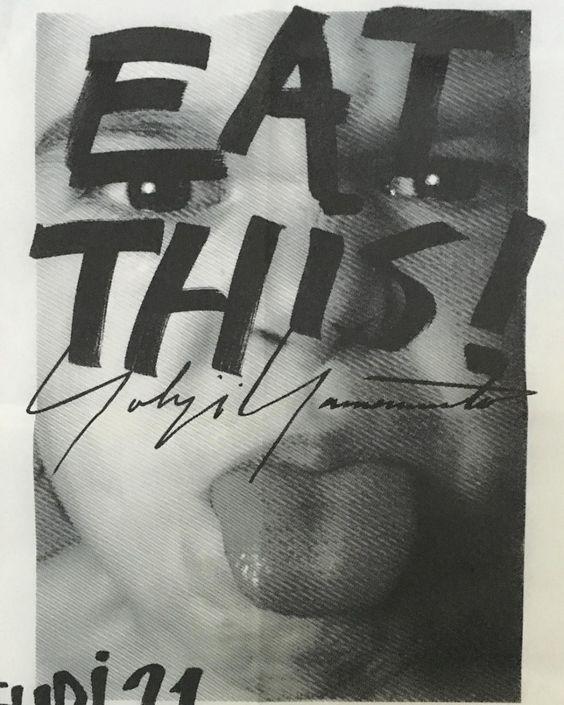
In 1977 he presented his Y's collection for the first time in Tokyo. Along with his compatriot Rei Kawakubo, he designed his first high-end women's ready-to-wear collection in 1981 and presented it in Paris. Over the next two years, Kawakubo and Yamamoto pioneered the idea of deconstructed fashions. Their revolutionary aesthetic shocked the world with clothing that appeared to be unfinished, tattered, and haphazardly put together. Yamamoto's loose, flowing silhouettes and ubiquitous use of black further enhanced his groundbreaking work, which became the favored look of the 1980s urban aesthetic. In 1984 Yamamoto presented a deluxe menswear line that incorporated many of these same elements.




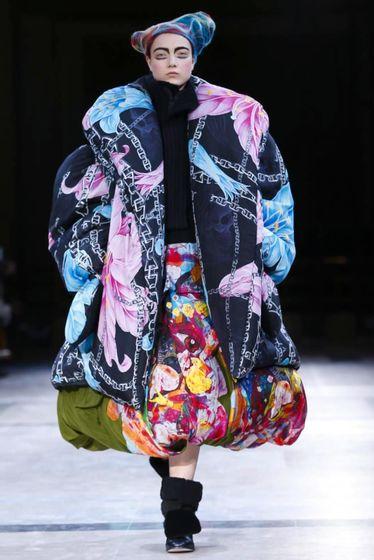


This collection follows the Yamamoto signa-ture of deconstruction,and mileage of fabric. The first dresses were very gothic, but also resembled cocoons with the black duvet aspect.Afterwards, a trippy feel featured in the hand painted graffiti-art of the collection. Inspiration from melancholic street-art and Japanese manga can be seen through the use of bright and vivid colours.
In the collection, the brief introduction of woolen knitwear and very strong and imponent shoulders, give a nod to ancient Samurai armour. This is to accentuate that the Yohji Yamamoto woman is very strong and powerful.The collection finished with his usual ample shapes, showing some unfunctional or unwieldy garments,featuring mitts that resembled smartphones.

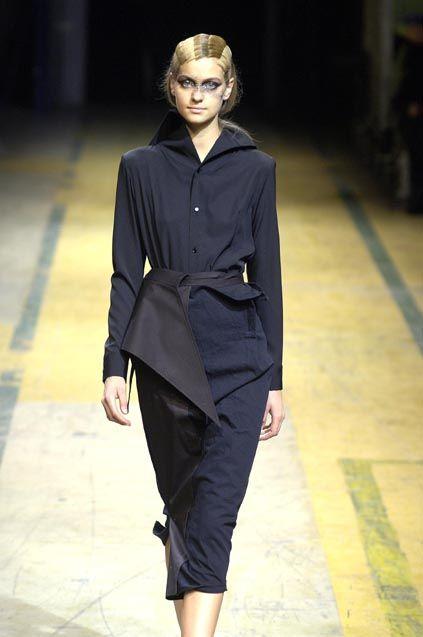

Crisp tuxedos and suits
Square ended tail coats
Black, white, grey capes
Tiered ruffles
Sharp shapes
The use of light and shade and more muted colours, had a loud effect.

Yohji Yamamoto is widely regarded as ranking among the greatest fashion designers of the late twentieth and early twenty-first centuries. He is one of the few in his profession who have successfully broken the boundaries between commodity and art, by creating clothing that ranges from basics like athletic shoes and denim jeans to coutureinspired gowns that are nothing short of malleable mobile sculptures. Lauded as a blend of master craftsman and philosophical dreamer, Yamamoto has balanced the seemingly incompatible extremes of fashion's competing scales.
Despite the magnitude of his talent and the importance of his work, however, Yamamoto has yet to be the subject of serious critical discourse among fashion journalists and historians. It is perhaps ironic that the only probing analysis of Yamamoto-both the man and the designer-came from someone who possessed little knowledge of or interest in fashion. Wim Wenders, the renowned German filmmaker, produced a documentary in 1989 entitled Notebook on Cities and Clothes. Throughout the film, Wenders dramatized Yamamoto's creative genius by setting the words of the late German philosopher Walter Benjamin against the urban backdrops of both Tokyo and Paris. Yet the director's probing failed to illuminate the crucial elements that constituted Yamamoto's fashions.
Neither the elements particular to the art of dressmaking nor Yamamoto's particular aesthetic contributions were discussed.
Inspiration from the intangible, mainly images of historical dress from sources such as photographs, has been a mainstay in Yamamoto's work. The crumpled collar in an August Sander portrait, the gauzy dresses captured by Jacques-Henri Lartigue while vacationing on the Riviera, and the gritty realism of Françoise Huguier's travels among the Inuit of the Arctic Circle are but a few examples. It is not surprising that the riveting catalogs created for each of Yamamoto's high-end ready-to-wear women's collections have included the work of such notable photographers as Nick Knight, Paolo Roversi, Inez van Lamsweerde, and Vinoodh Matadin. Whether Yamamoto is evoking historicism via the ancien régime or the belle epoque, or ethnic garments made of richly woven silks and woolens, he has come to epitomize the vast range of creative possibilities in the art of dress.






Yamamoto's professed love of and respect for women has not been evident to many because his clothes were often devoid of Western-style gender markers. He expressed an aversion to overtly sexualized females, and often dressed women in designs inspired by men's wear.
Such cross-gender role-playing has long been a part of Japanese culture, and a persistent theme among performers and artists for centuries. The fact that Yamamoto on more than one occasion chose women as models for his menswear fashion shows was another small piece of his sexual identity puzzle.
Even when his later work embraced the sweeping romanticism of postwar Parisian haute couture, Yamamoto's historical recontextualizations contrasted sharply with the work of other marquee designers.
Deliberately absent from his runway presentations were the requisites of the contemporary high-fashion wardrobe for women: high heels, rising hemlines, plunging necklines, and sheer fabrics.
These characteristics might be the reason that Yamamoto's dark tailored suits and white shirts for both men and women have been some of his most enduring and compelling products. Worn by Western men of all classes for two centuries, the dark-colored suit and the white shirt have a combined ability to convey both sexuality and power through conformity.
This blend of erotic appeal and strength was a perfect template for Yamamoto to express his postwar version of male and female sexuality.
16
First, the parade of midnight-hued column silhouettes that opened the show provided the very few instances of wearable pieces in the collection, and even they would still be quite challenging to navigate in any environment. Aggressively painted swathes of fabrics divinely draped on the models that followed after conjured up a different feeling—an exploration of emotions that was a tad overwhelming, but euphoric nonetheless.
And finally, women expertly wrapped in black with only their left eyes exposed to the public presented a sort of classic seduction that was enigmatic and elegant. If only such looks were wearable on the street, then the world can share in Mr. Yamamoto’s exquisite beauty and poetry.
They may seem like giant swathes of fabric that wrapped the female forms, but Yohji Yamamoto's poetic narrative transcends all of that. His Fall 2019 show was an effervescent display of emotion, beauty, and seduction. Though it's a shame we might not see them on the streets, it was already an honor to witness such beauty on the runway!
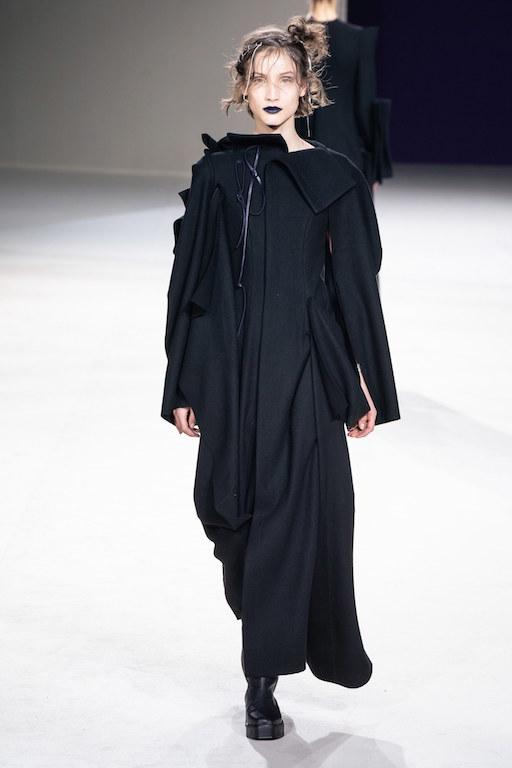
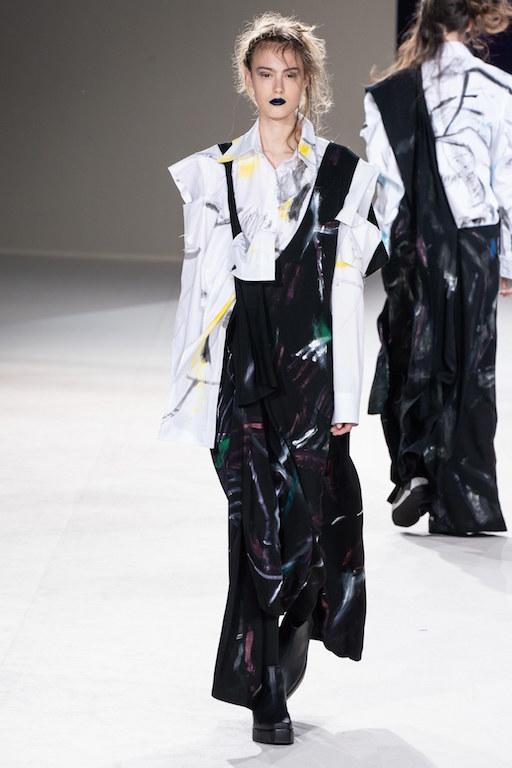
AW 2019
Darkly Poetic
Impressive Narrative
Coherent Collection
Fascinating Shapes
Lots of Interesting Silhouettes
Exceptional Draping
Beautiful Construction


Yamamoto is known for an avant-garde spirit in his clothing, frequently creating designs far removed from current trends. His signature oversized silhouettes often feature drapery in varying textures. Yohji' collections are predominately made in black, a colour which Yamamoto has described as “modest and arrogant at the same time. Black is lazy and easy - but mysterious. But above all black says this: "I don’t bother you - don’t bother me".
No color in the fashion palette has been as important in the work of Yohji Yamamoto as black. This early unrelenting black-on-black aesthetic earned his devotees the nickname karasuzoku, or members of the crow tribe. Black has certain associations in the history of the West that have been processed through a kaleidoscope of self-conscious modernist or postmodernist theories and assumptions. As a result of historical recontextualization, black had by the last quarter of the twentieth century acquired a range of meanings, such as poverty and devastation for some fashion critics, and sobriety, intellectualism, chic, selfrestraint, and nobility in dress for others.
The aesthetic attributes of traditional Japan and contemporary culture, as well as the role black plays in fashion, can be seen in the color's association with poverty. For some observers, black is an illusion of-or perhaps an allusion to-rusticity, simplicity, and selfrestraint. In Japan, black dyes may connote rural origin as well as noble warrior status. An important connection between black and the symbolic associations of old Europe, traditional Japan, and the modern urban landscape may also be derived from the couture atelier. Yamamoto, like Cristóbal Balenciaga, often created day suits, dresses, ball gowns, and coats devoid of any ornament. Charcoal gray, navy blue, and of course black woolens were often molded and manipulated into pure sculptural forms that displayed both marvelous engineering and tailoring techniques as well as a love of dramatic form.


.
The connection between deconstruction, originally a French philosophical movement, and contemporary fashion design has yet to be fully explored by fashion historians. There is no direct evidence that such ideas were the motivating force in the early designs of Yohji Yamamoto.
It is more likely that he combined a mélange of influences: the devastation and rapid rebuilding of Japan in the postwar era; the revolt against bourgeois tastes; an affiliation with European street styles; and a desire, like that of the early proponents of abstraction in fine art, to find a universal expression of design by erasing elements that assign people to specific socioeconomic and gender roles.
Aesthetically, the dressmaking techniques that gave Yamamoto's work its deconstructed look were also related to traditional nonWestern methods of clothing construction as well as to the concept that natural, organic, and imperfect objects can also be beautiful. Yamamoto's clothes masked the body with voluminous folds and layers of dark fabric; in addition, they diminished such evident elements of clothing as frontality and clear demarcations between the inside and outside of a garment.
Yamamoto's version of deconstruction fashion more likely began by questioning the very essence of his postwar existence. Japan's initial efforts to rebuild its physical and political infrastructure, and its later economic ascendancy, did provide the right environment to foster the talents of an amazingly creative generation that included the architects Tadao Ando, Arata Isozaki, and Kenzo Tange as well as the furniture designer Shiro Kuramata and the fashion designers Yamamoto and Kawakubo.

Quality driven
Enjoys the finer things in life; the arts, fine wine and dining. Sophisticated and intellectual pastimes. Pays extra for quality.
Creative
Huge appreciation of the arts;modern and historical. Visits art exhibitions regularly also reads, takes photos and goes to the theatre for leisure.
Knowledgable
A successful intellectual,wordly and cultured likes to travel and expand their knowledge
Independent
Has a busy life in the thriving city with work and leisure activities. Spends time with friends and also by themselves.
Lives in the city
Right in the heart of a capital in modern contemporary apartment, minimal but luxury.
Understand
Minimal and contemporary but sophisticated way of living,class and quality is preferred
No specific age range as such a wide demographic for both men and women. Just need to be able to afford the high prices and believe and appreciate the brands philosophy.
Loyal
They say once they buy into the brand they stay with the brand, believe in the philosophy and travel to visit the stores and his exhibitions.
Conveys a unique identity, doesn’t follow the trends,has their own individual style.Has a timeless elegance.
Refined
Sophisticated, well educated and intellectual.
Affluent
Can afford the high end prices as they are a successful, independent person.




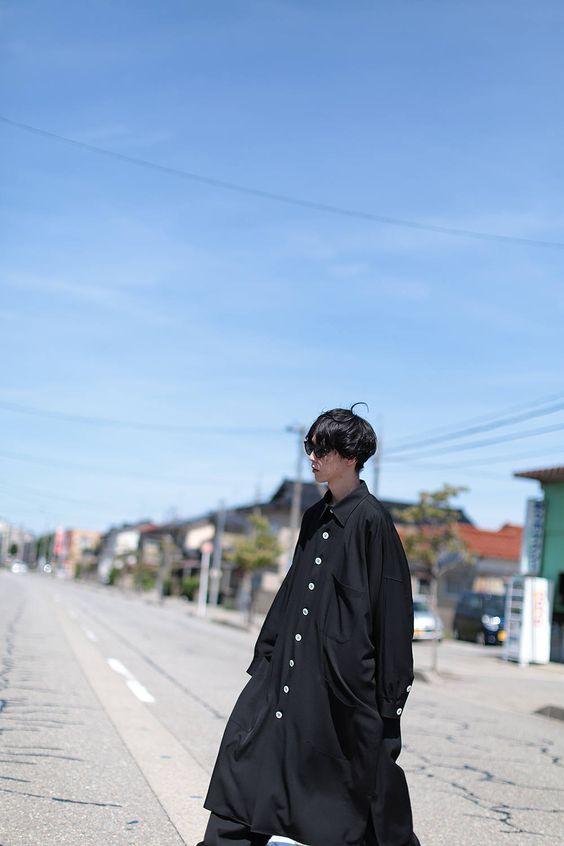



Competitors vary but mainly stay in the Exclusive, High price point group.
Kenzo
Hussein Chalayan
Issey Miyake
Rick Owens
Ann Demeulemeester
Comme des Garcons
Junya Watanabe
Gareth Pugh
What sets Yohji Yamamoto out from its competitors is their inseparability and encapsulation in their Asian heritage. Many journalists inaccurately assumed that they produced clothing worn by all Japanese people. The reality was that the loose, dark-colored, and seemingly tattered garments were as startling to the average Japanese as they were to the Western audiences that first viewed them. Although Yamamoto's work changed and evolved over the next two decades, it retained several key elements- the ambiguities of gender, the importance of black, and the aesthetics of
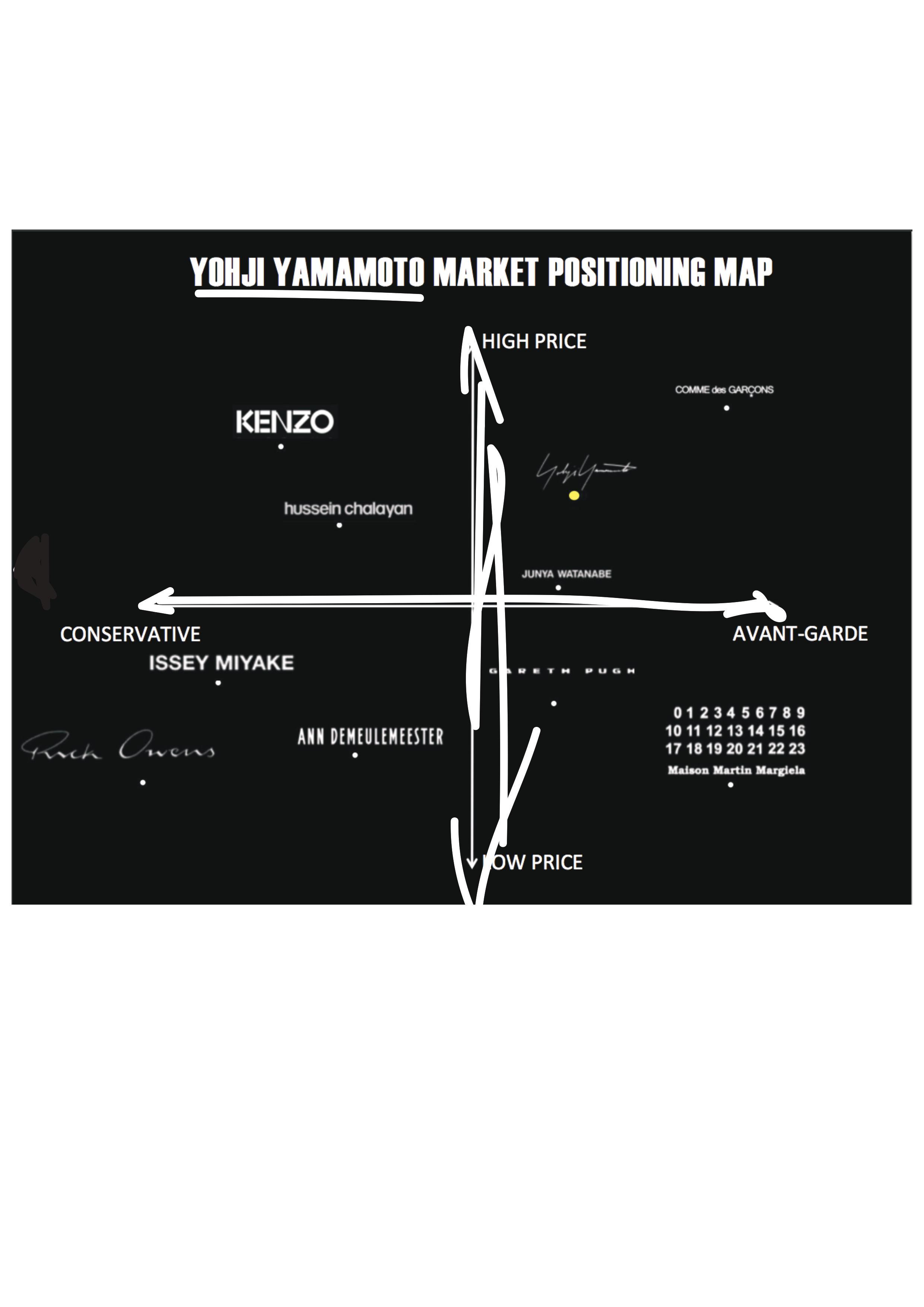


Yohji Yamamoto's custom-made textiles use a variety of traditional Japanese techniques and other more common weaves such as gabardine and tweed. All his fabrics are made in Japan to his own specifications, making them unique to his designs.
'Fabric is everything. Often I tell my pattern makers, "Just listen to the material. What is it going to say? Just wait. Probably the material will tell you something."'
Yohji
Yamamoto
The importance of the fabric is tangible in every Yamamoto piece. From deciding the exact balance between the warp and the weft of the fabric and dyeing it the ideal hue to establishing the number of washings required to achieve the perfect balance between new and old, every fabric Yamamoto uses is specially created for him in Japan. Yamamoto's preference for exceptionally heavy fabrics and textiles not generally utilized in womenswear, high fashion or even clothing in general lends a particular slant to his sartorial language.
Yohji Yamamoto often uses embroidery, both hand and machine-made, particularly for his menswear designs as can be seen in Autumn/ Winter 2006-7, Spring/Summer 2009 and 2011 collections. These intricate decorations contribute to Yamamoto's underlying desire to subvert people's perceptions of what men and women should wear.
The use of knitwear in Yohji Yamamoto's work often emphasises his wish to create space between the garment and the body. The heavy knit featured in both his Autumn/Winter 1998-99 womenswear and Autumn/Winter 2006-7 menswear collections, give the wearer the possibility of inhabiting the garment naturally, without being restricted by a predetermined form.
Shibori is a particular method of dyeing cloth by binding small areas with either silk or cotton thread and using a wooden bucket to isolate areas to be dyed. Due to its intricate nature, it is one of the most work-intensive and expensive ways of dyeing. Yohji Yamamoto used this technique in his Autumn/Winter 1994-5 and Spring/Summer 1995 womenswear collections.
Kyo-yuzen is a dyeing technique which originated in Kyoto in the 1700s and is traditionally used for Kimonos. It consists of over 20 steps including design, drawing, gluing, dyeing and decorating. Yohji Yamamoto uses this dyeing method frequently, often through non-traditional motifs as can be seen in his Autumn/Winter 2009-10 menswear collection.


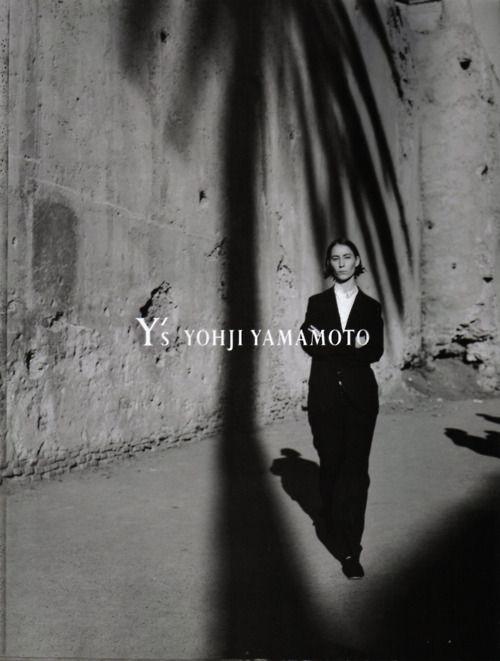
Tokyo designer Yohji Yamamoto favours largely natural fabrics for his collections:“I don’t like synthetics,” he says. “I don’t like using fabric produced using oil. We are creating a disaster on the earth. I like cotton and wool — I see fabric as a second skin, and it needs to let you breathe.”
"When fabric is left to age for a year or two, it naturally contracts, and at this point it reveals its charm. The threads have a life of their own, they pass through the seasons and mature. It is only through this process that the true appeal of the fabric is revealed. In releasing one collection after the next on a six-month cycle, it is impossible to design clothing from fabric that has been allowed to age. The intense jealousy I occasionally feel towards used clothing comes from this fact. It was in just such a moment that I thought, "I would like to design time itself".
"...it seemed the best thing one could do for the sake of the earth would be to die on the spot. Though they pour toxic waste into the rivers, humans will only pay attention to it on the day the dead fish rise to the surface."
Yohji Yamamoto highlights emotion brought on by a secondhand, vintage or antique piece of clothing. They touch a piece of our past, a personification of those who have worn them. However the sustainable appeal of re-worked and re-used fabrics is more relevant than ever before, with designers realising the global impact of their fabric choices and sartorial actions. Ethical clothing underpins a bigger picture, acting as a catalyst for environmental change.
Yamamoto’s focus on natural textiles is continually innovative, but is it really a greener way of operating? Tamsin Lejeune explains that it’s not quite that simple: “There are environmental advantages to using natural fibres, but there are several other considerations that come into the equation, such as the pesticides used on growing cotton.” And even organic cotton has its issues — its production requires exorbitant amounts of water. In reality it's not good enough! The company continues to use leathers and silks.


Yamamoto continued to evolve in the early 2000s. His spring 2003 collection was not shown during the Paris ready-to-wear fashion week in October of 2002, but instead during the haute couture presentations earlier that year. Simultaneously, he became the designer for a new line of clothing produced in conjunction with the Adidas sportswear company called Y's 3. This agreement came about after Yamamoto first designed an astoundingly successful set of trainers, athletic shoes, and sports shoes for Adidas in 2001.


“A collection of 5 fragrances where every single scent is a reflection of a main value, an element of the DNA; combined together, they present what we know today as Yohji Yamamoto heritage. And one more that was lost to be found one day. Each packed together with a hidden message from Designer himself.
Each bottle is decorated with multi-layer foiling technology, developed specifically for the project. Bottles are differentiated by inner finish with could be simple as white or cracked as an old mirror. Or even glowing from inside.
Box is made of solid piece of EVA foam with laser cut socket and hand cut outer edges – that make every single box unique with it’s own pattern.”



Yamamoto's other lines include Pour Homme, Costume d'Homme and Regulation Yohji Yamamoto. Yamamoto has also collaborated with a number of brands, including Adidas (Y-3), Hermès, Mikimoto and Mandarina Duck; and with artists such as Tina Turner, Sir Elton John, Placebo, Takeshi Kitano, Pina Bausch and Heiner Müller.


Social Media has become increasingly popular, by 2019 it is expected that 3 billion people will be on the platform. With over 53k followers on Facebook, and over 800 thousand on Instagram, alongside its official website, updates their followers with their latest collections to keep them up-todate on trends, this could urge their customers to act quickly by buying the latest gear, to seek that high-sta-tus value they desire.
The brand makes it’s sales through the stores that located in all major cities. It is not possible to make purchases through the online website.






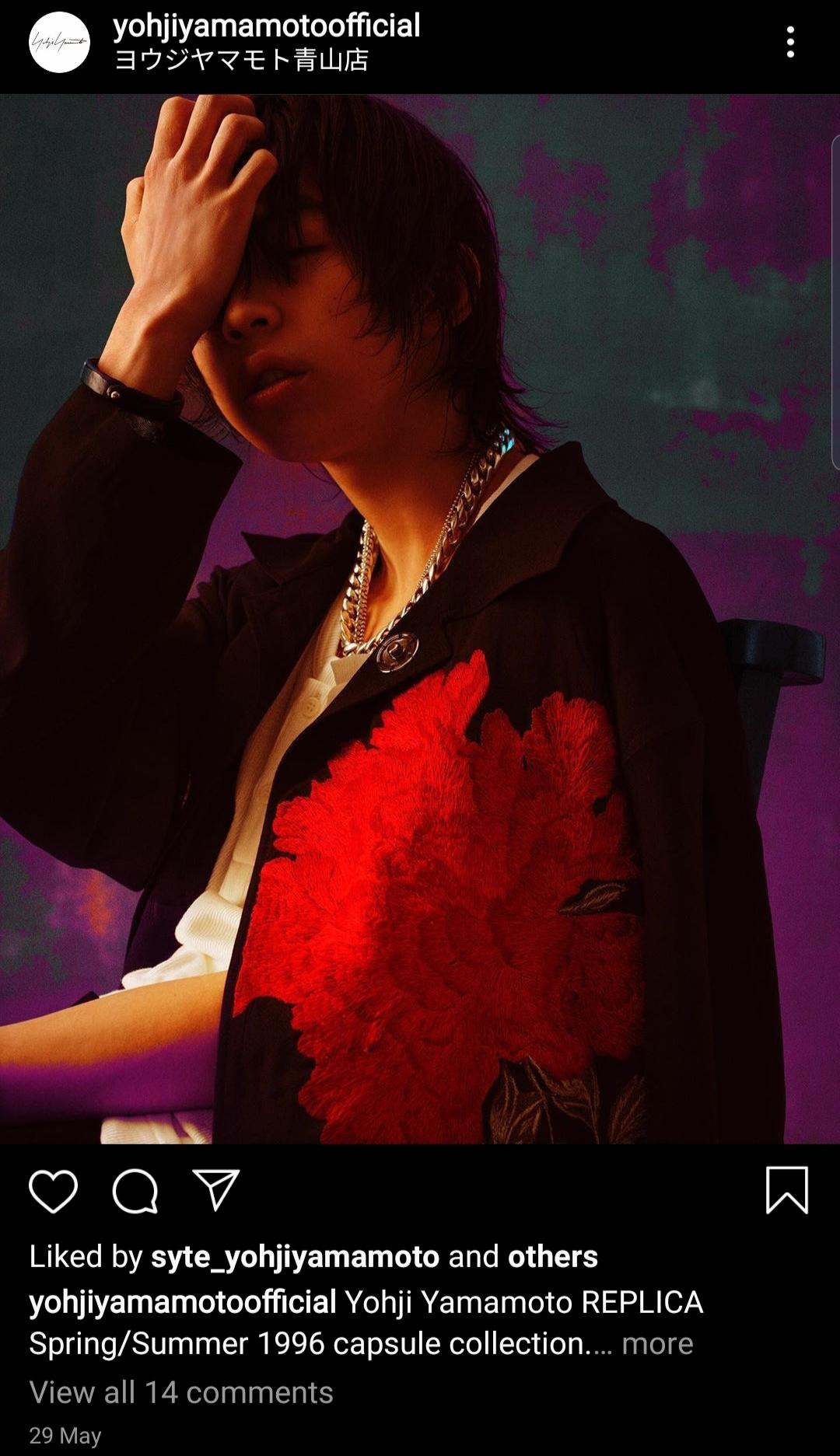


Yohji Yamamoto has only four other flagship stores outside Japan, these are located in London,Paris,New York, and Antwerp. There are five stores across Japan. The small amount of stores internationally creates an exclusive feel the brand.
Yohji Yamamoto Store-Japan: This store is the stand alone Yohji Yamamoto Flagship store in Tokyo.Most of the range sin Tokyo are within multi brand high fashion department stores alongside other designer ranges such as Comme de Garcons,Issey Miyake and Sonia Rykiel. There are at least 16 multi brand stores displaying Yohji Yamamoto in Tokyo.
The stores located outside Japan are positioned in high fashion capitals of the world,which could relate to the market Yohji Yamamoto’s designs appeal to and also the competition of high end fashion brands around it. The Antwerp store is the exception to this as it is not a typical fashion capital,also the store is situated in the Mode Natie building which also homes the Flanders Fashion Institute, The Antwerp Fashion Academy and The Mode Museum. So it is a part of the fashion centralised area in Belgium home to iconic also up and coming fashion designers.
As there are five flagship stores across Japan,more than there is across the rest of the world, this shows the loyalty of the Yohji Yamamoto brand to it’s origins and also the Japanese cultural influences in the brand.As the stores are widely available it makes it more accessible to the Japanese customers.

